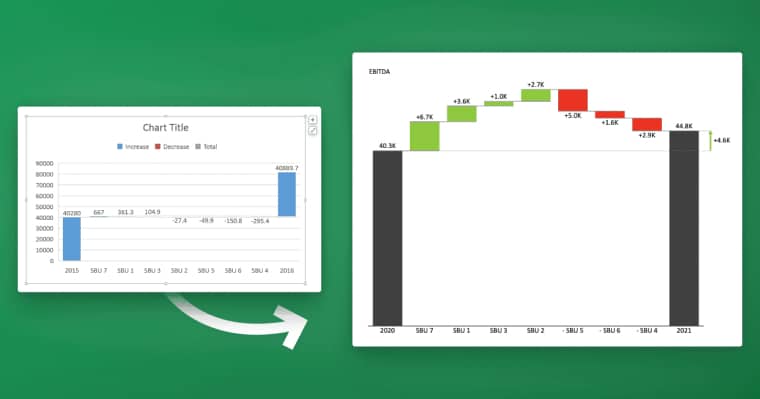In the world of business intelligence and data analysis, Power BI has emerged as a powerful tool for extracting insights from vast amounts of data. One key feature that makes Power BI stand out is its DAX (Data Analysis Expressions) language, which allows users to create complex formulas and calculations. One such function that is widely used for trend analysis in Power BI is the EARLIER DAX function.
Table of Contents
Understanding the EARLIER DAX function in Power BI
The EARLIER function in Power BI is a powerful tool that allows users to reference the previous row’s value within a calculated column or measure. This function plays a crucial role in performing various trend analysis tasks, such as calculating month-over-month growth rates, identifying seasonality patterns, and detecting outliers.
When used in combination with other DAX functions and formulas, the EARLIER function enables users to dive deep into their data and uncover valuable insights.
One important thing to note about the EARLIER function is that it can only be used in calculated columns or measures within a Power BI model. It cannot be used in visual-level calculations or in the context of a visual interaction. This limitation is important to keep in mind when designing your Power BI reports and dashboards.
Another key aspect of the EARLIER function is that it relies on the order of the rows in the underlying data table. If the data is not sorted in a specific order, the results of the EARLIER function may not be accurate. It is therefore recommended to ensure that your data is properly sorted before using the EARLIER function to avoid any potential issues.
Exploring the benefits of using EARLIER function for trend analysis
The benefits of utilizing the EARLIER function for trend analysis in Power BI are numerous. Firstly, it provides a way to compare the current row’s value with the value in the previous row, which is essential for identifying trends and analyzing changes over time.
Secondly, the EARLIER function allows users to perform calculations based on the value in the current row and the value in the previous row. This flexibility allows for advanced trend analysis techniques, such as calculating rolling averages or identifying trend breakpoints.
Furthermore, the EARLIER function helps in detecting and handling changes in data patterns, such as when there is a shift in the underlying business environment or an unexpected event occurs. By referencing the previous row’s value, users can easily identify and analyze these anomalies, enabling proactive decision-making.
Another benefit of using the EARLIER function for trend analysis is its ability to handle complex data transformations. With the EARLIER function, users can create custom calculations that take into account multiple previous rows, allowing for more sophisticated trend analysis.
In addition, the EARLIER function can be combined with other Power BI functions and features to further enhance trend analysis. For example, users can use the EARLIER function in conjunction with time intelligence functions to analyze trends over specific time periods, such as month-over-month or year-over-year comparisons.
Step-by-step guide to implementing EARLIER DAX function in Power BI
Implementing the EARLIER function in Power BI involves a series of steps. Here’s a step-by-step guide to help you get started:
- Create a calculated column or measure in Power BI where you intend to perform trend analysis.
- Within the calculation formula, use the EARLIER function to reference the value in the previous row.
- You can apply any additional DAX functions and formulas to manipulate and analyze the data.
- Test the calculation and ensure it provides the expected results.
- Adjust the calculation as needed to suit your specific trend analysis requirements.
- Visualize the calculated results in Power BI reports or dashboards to gain actionable insights.
Once you have implemented the EARLIER function in Power BI, you can take advantage of its capabilities to perform various types of analysis. For example, you can use the EARLIER function to calculate running totals, compare values across different time periods, or identify patterns in your data.
It’s important to note that the EARLIER function can only be used within calculated columns or measures in Power BI. It cannot be used directly in visualizations or in other parts of your report. However, you can use the results of your calculations that involve the EARLIER function to create visualizations that provide meaningful insights.
Leveraging the power of EARLIER function for advanced trend analysis in Power BI
While the basic implementation of the EARLIER function can provide valuable insights, advanced users can unlock even more power by combining it with other DAX functions and formulas.
For example, by using a combination of the EARLIER function and the CALCULATE function, users can apply complex filters and conditions to perform trend analysis on specific subsets of data. This allows for more granular analysis, enabling users to focus on specific segments or time periods.
In addition, integrating the EARLIER function with statistical functions, such as AVERAGEX or STDEV.P, enables users to calculate advanced trend indicators like moving averages or standard deviations.
Analyzing historical data trends with the help of the EARLIER DAX function
Historical data analysis is a crucial aspect of trend analysis, as it helps identify patterns, seasonality, and long-term trends. The EARLIER DAX function simplifies the process of analyzing historical data trends in Power BI.
By leveraging the EARLIER function, users can calculate growth rates, detect cyclic patterns, and analyze the overall trend over a specified time period. This allows users to gain a deeper understanding of how their data has evolved and make data-driven decisions based on historical trends.
Unleashing the potential of EARLIER function for accurate trend forecasting in Power BI
The EARLIER function not only aids in historical trend analysis but also plays a crucial role in accurate trend forecasting. By referencing the previous row’s value, users can create forecasts based on historical patterns and trends. This helps in predicting future outcomes and making informed decisions.
It is important to note that while the EARLIER function assists in trend forecasting, its accuracy largely depends on the quality and relevance of the historical data used. Additionally, users must consider external factors and variables that may impact future trends.
Advanced techniques for utilizing the EARLIER DAX function in Power BI trend analysis
While the basic usage of the EARLIER function is powerful on its own, there are advanced techniques that can further enhance trend analysis in Power BI. For example, users can combine the EARLIER function with time intelligence functions like TOTALYTD or SAMEPERIODLASTYEAR to perform year-over-year or cumulative trend analysis.
Furthermore, utilizing the EARLIER function in combination with other DAX functions, such as RANKX or TOPN, allows users to identify the highest or lowest values and analyze trends within specific groups or categories.
Overcoming common challenges when using the EARLIER function for trend analysis in Power BI
While the EARLIER function presents numerous advantages for trend analysis, users may encounter challenges when utilizing it in Power BI.
One common challenge is dealing with missing or incomplete data. If there are gaps in the data, the EARLIER function may not provide accurate results. To address this, users can explore various techniques, such as interpolation or data imputation, to fill in missing values and ensure a comprehensive analysis.
Another challenge is optimizing performance when working with large datasets. The EARLIER function can potentially slow down calculations, especially when applied to millions of rows. Users can mitigate this challenge by carefully designing their data model, leveraging data summarization techniques, and utilizing indexing where applicable.
Best practices for optimizing trend analysis with the EARLIER DAX function in Power BI
To optimize trend analysis with the EARLIER function in Power BI, it is important to follow best practices:
- Ensure the data model is properly designed with optimized relationships, hierarchies, and aggregations.
- Limit the use of the EARLIER function to where it is essential, as excessive usage can impact performance.
- Regularly refresh and update the data to ensure accuracy and relevancy.
- Document and annotate calculations to ensure clarity and easy understanding for future analysis.
- Explore and utilize the vast resources available, such as community forums and documentation, to learn from others’ experiences and gain insights into advanced techniques.
Unlocking actionable insights through trend analysis with EARLIER DAX function in Power BI
By leveraging the powerful capabilities of the EARLIER function for trend analysis in Power BI, users can unlock valuable insights that drive business decisions. Whether it’s identifying emerging trends, detecting anomalies, or predicting future outcomes, the EARLIER function empowers users to make data-driven decisions and take proactive actions.
By combining the EARLIER function with other advanced features and techniques within Power BI, users can explore data at a granular level, gain a deep understanding of trends, and drive business success.
Enhancing data visualization with the help of the EARLIER DAX function for trend analysis
Data visualization plays a crucial role in presenting and communicating trend analysis insights effectively. Power BI provides a rich set of visualization options that can be enhanced with the EARLIER function.
By visualizing the calculated trend analysis results, such as growth rates or seasonal patterns, users can better comprehend and interpret the data. Utilizing interactive visualizations, filters, and slicers, users can dynamically explore trends, drill down into specific details, and gain actionable insights.
Exploring real-world use cases of the EARLIER function for effective trend analysis in Power BI
The EARLIER function finds its application in various real-world scenarios where trend analysis is essential. Here are some examples:
- Financial Analysis: Analyzing revenue trends, calculating year-over-year growth rates, and identifying profitability patterns.
- Marketing Analytics: Tracking campaign performance, analyzing customer behavior, and identifying market trends.
- Sales Forecasting: Predicting future sales based on historical patterns and analyzing the impact of promotions or pricing changes.
- Supply Chain Management: Optimizing inventory levels, identifying demand patterns, and detecting supply chain disruptions.
Harnessing the power of historical data with the EARLIER DAX function in Power BI for trend analysis
Historical data provides a wealth of information that can be leveraged for trend analysis in Power BI. By harnessing the power of the EARLIER function, users can extract valuable insights from their historical data and make informed decisions based on past trends.
Whether it’s identifying long-term growth patterns, understanding seasonality effects, or detecting outliers, the EARLIER function empowers users to unlock the potential of their historical data and gain a competitive edge in their respective industries.
Maximizing productivity and efficiency with advanced trend analysis using EARLIER DAX function in Power BI
When it comes to trend analysis, maximizing productivity and efficiency is paramount. By utilizing the EARLIER function in Power BI, users can streamline their analysis workflows and extract insights with ease.
Moreover, the ability to create reusable calculations, employ time-saving techniques, and automate data refreshes ensures that trend analysis can be performed efficiently, allowing users to focus on interpreting and acting upon the insights derived from the data.
In conclusion, the EARLIER DAX function in Power BI is a powerful tool that enables users to perform trend analysis on their data. By understanding its functionality, exploring its benefits, and leveraging advanced techniques, users can unlock actionable insights, optimize data visualization, and make informed decisions that drive business success.














